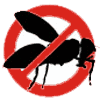















Greenslopes is a southern suburb in the City of Brisbane, Queensland, Australia. It is 6.0 kilometres (3.7 mi) by road south of the Brisbane CBD. In the 2021 census, Greenslopes had a population of 7,941 people.
Parts of the current suburb were originally opened for settlement under names such as the Dunellan, Thompson and Mount Pleasant Estates. There is still a Dunellan Street in the suburb, adjacent to the state school.
Greenslopes was named after an early estate in the area. The estate was owned by Frederick Wecker, who purchased the land in 1857 and named it after the area's green pastures.
In July 1887, "Baynes' Paddock", comprising 471 allotments, was advertised to be auctioned by Arthur Martin & Co. The allotments for sale were situated along Logan Road; Cornwall Street; Ernest Street; Beatrice Street; Vera Street; Logan Street; Adelaine Street (now Juliette Street); Reuben Street (now Zillah Street); Victor Street (now Flora Street); Arnold Street (now Lincoln Street) and Rita Street (now Regina Street). A map advertising the auction includes a local sketch that shows the nearby bus stands and South Brisbane Railway.
Greenslopes formed part of Stephens Shire until its amalgamation with over 20 other local shires into Greater Brisbane in 1925. The shire's name can still be seen on a plaque on the bridge where Juliette Street crosses Norman Creek.
Mount Pleasant Provisional School opened on 30 July 1890 with an enrolment of 65 students. It was renamed Dunellan Provisional School. In 1892 it became Dunellan State School. In 1922 it was renamed Greenslopes State School.
In 1900, a small Baptist church was built in Cedar Street. In 1913, it was moved to the north-west corner of Dunellan Street and Henry Street (27°30′24″S 153°02′54″E / 27.5068°S 153.0482°E). On Saturday 14 October 1933 a new Greenslopes Baptist Church was officially opened on the north-west corner of Dunellan Street and Henry Street. The brick church has a 61 by 31 feet (18.6 by 9.4 m) main room with a seating capacity for 300 people, a 16 by 8 feet (4.9 by 2.4 m) entrance porch, together with a baptistry and vestries for both minister and choir. It is listed on the Brisbane Heritage Register.
The Brisbane City Council operated trams along Logan Road to Greenslopes from 1914 to 13 April 1969. Until 1957 a tram line also operated along Chatsworth Road, branching off the Logan Road line at Greenslopes.
Chatsworth Heights Estate bordering Logan Road was auctioned on the Saturday 14 June 1914.
In October 1925, 23 allotments bordered by Holland Street, Donaldson Street and Curd Street, were advertised to be auctioned by Isles, Love & Co, Limited. A map advertising the auction shows the nearby tram line on Chatsworth Road.
St Matthew's Anglican Church hall opened circa 1936 and closed circa 1968.
In September 1938, "Waratah Estate", made up of eight allotments bordered by Logan Road and Donaldson Street, were advertised to be auctioned by Sharp & Musgrave. A map advertising the auction states that the allotments are on the Holland Park tramline.
In 1942 during World War II, the Repatriation General Hospital (RGH) opened in Greenslopes. It was also known as 112 General Military Hospital (Brisbane). It was operated by the Australian Government though the Department of Veterans Affairs (DVA) to provide healthcare for war veterans. It was Brisbane's first purpose-built military hospital. By the late 1980s, the need for veterans' hospital care was reducing. In 1995, the government sold the hospital to private hospital operator Ramsay Health Care. The arrangement provided for the continued care of veterans in the hospital funded by the Australian Government with the remainder of the hospital's services being available for private patients. The hospital has been expanded with additional buildings allowing a wider range of specialist services to be provided in areas such as cardiac care, day cancer treatments, and robotic surgery. Some of the buildings on the site including the administration block and the chapel are heritage-listed.
In 1975, the suburb of Stones Corner was absorbed into Greenslopes before officially being re-instated as a suburb of its own in November 2017.
Before August 2015, Greenslopes was in the Holland Park Ward (an electorate within the City of Brisbane) but, from August 2015, it became part of the Coorparoo Ward with Annerley, Coorparoo, Camp Hill and Carina Heights.
In the 2011 census, Greenslopes had a population of 8,565 residents, of whom 50.8% were female and 49.2% were male. The median age of the population was 32; five years younger than the Australian median. 64.1% of people living in Greenslopes were born in Australia, compared to the national average of 69.8%. The other most common countries of birth were India (4.3%), England (3.2%), New Zealand (3.1%), the Philippines (1.1%), and China (0.8%). 74% of people only spoke English at home, while the next most commonly spoken languages were Punjabi (1.2%), Hindi (1.1%), Mandarin (1.1%), Cantonese (0.9%), and Greek (0.9%). The most common religious affiliation was Catholic (25.7%), followed by 'No Religion' (25%), Anglican (12%), Uniting Church (3.8%), and Buddhist (3%). The suburb's population density was 2,913/km, whereas Brisbane's was 140/km. Most occupied dwellings were apartments (48.7%), followed by separate houses (42.6%).
In the 2016 census, Greenslopes had a population of 8,936 people.
In the 2021 census, Greenslopes had a population of 7,941 people.
History info courtesy of Wikipedia